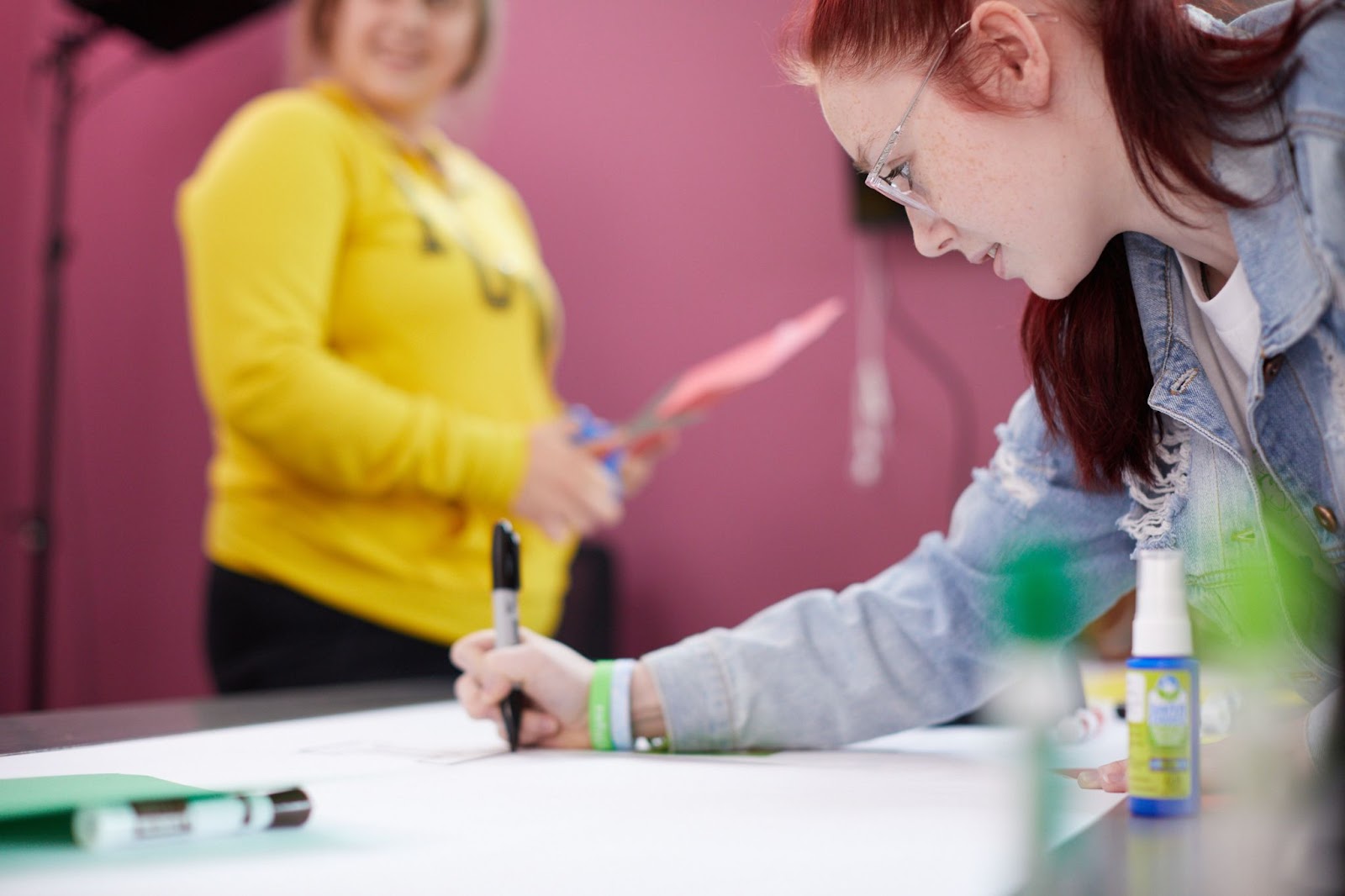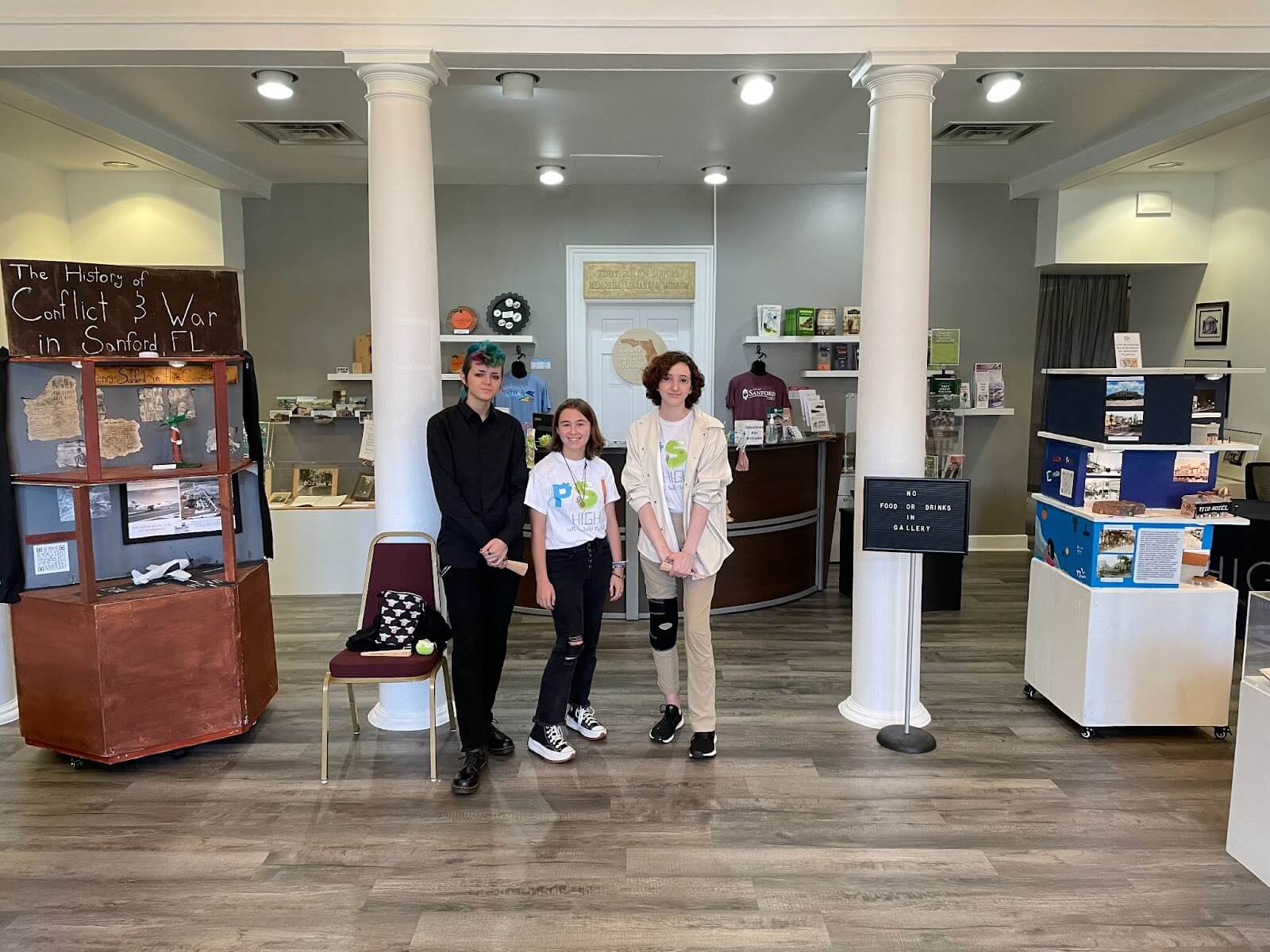How Service Learning Gets Students Involved
At Iowa BIG, an XQ school in Cedar Rapids, Iowa, students learn by helping their…

At Iowa BIG, an XQ school in Cedar Rapids, Iowa, students learn by helping their community. Take student Caitie, who graduated from Iowa BIG in 2019. During her time at Iowa BIG, Caitie led a team of students partnering with Camp Courageous, a camp that serves people with disabilities. Her team worked to create an outdoor space so that campers could enjoy nature safely and meaningfully. Doing so taught students about design, solar technology, and how to pitch ideas to funders successfully. This combination of community service and rigorous learning is at the core of a powerful approach to teaching: service learning. Service learning deepens learning and helps students become more connected to their communities. Educators can help students apply their learning to become agents of community change when implemented. In traditional classrooms, students may learn about issues that communities face, such as pollution, social mobility, or poverty. Through service learning, students venture out of the classroom to learn about these topics in a first-hand learning experience.
What is Service Learning?
According to a report from youth.gov, service learning was first defined in federal legislation in the United States in 1990. Today, it’s widely used in classrooms across the US, especially in high schools, as an accessible and powerful way to enrich learning for all students while benefiting local communities.
In service learning, students gain knowledge and skills as they work alongside their communities to address their specific challenges. As Vanderbilt’s Center for Teaching puts it, service learning “combines learning goals and community service in ways that can enhance both student growth and the common good.” Similar to project-based learning, service learning creates an active and dynamic learning environment.
Effective service learning incorporates project-based learning (PBL) to combine real-world service with academic rigor. In project-based learning, students master skills and content by tackling authentic challenges. Most PBL projects are aligned with rigorous academic standards and include strategic benchmarks to assess whether or not students have mastered said skills.
For example, one project at Iowa BIG had students design Kolache-shaped benches to celebrate local Czech history. Teachers aligned the project with state standards around history, English, and local government. The best service learning experiences follow this pedagogy, coupling real-world service with academic goals, structure, and assessment.
It’s important to note that service learning is neither volunteering nor an internship. While volunteering is a wonderful experience where students can support their communities, volunteer work can imply a brief, one-way relationship whereby students dedicate time as support. Service learning, however, is a partnership where students and community partners work together for their mutual benefit over the course of a project. In service learning, student contributions enrich their communities and gain valuable knowledge through experiential learning.
Service learning is also distinct from internships, which have their own set of unique challenges students may face, such as competition and accessibility—two aspects service learning aims to remove. In internships, students work in the community in exchange for pay or work credit—instead, service learning orients around a community’s specific needs.
Why is Service Learning Important?
High school should prepare students as problem-solvers and critical thinkers—masters of academic content who can apply what they know to the world outside of school. Our XQ Learner Outcomes encourage this specifically by asking students to become original thinkers for an uncertain world and generous collaborators.
Service learning develops these outcomes by grounding students’ academic learning in meaningful, real-life contexts. Círculos, an XQ school in Santa Ana, California, embodies this approach, as students learn by taking on projects in their community. For example, a group of students who were especially passionate about how to make their city more sustainable partnered with a local architecture firm to design a new green alleyway project.
In doing so, students contributed meaningfully to their community while also gaining exposure to architectural concepts and learning about design. Through tackling community challenges, students learn skills and knowledge while also growing as problem-solvers and leaders in their communities.
The Benefits of Service Learning for Students
Service learning benefits students as learners and people, helping them grow academically, socially, and as community members and citizens.
A report from the Grisham-McLean Institute for Public Service and Community Engagement synthesizes research on service learning to show how it benefits students as both learners and community members. Students’ engagement through community involvement led to academic growth, moral development, leadership and communication, and personal efficacy.
The benefits of service learning for academic performance are particularly noteworthy. In a 2016 study published in the International Journal of Teaching and Learning in Higher Education, researcher Shauna Brail investigated the academic impacts of service learning on college students. Brail found that when given a choice between a service-based project or a research paper, students “who participated in service learning achieved statistically significantly higher final grades.”
While the study focused on college students, the service-based project is a model example for high school classrooms. Service-based projects combine the structure of a PBL and create a meaningful experience, seamlessly integrating academic rigor and purpose-driven community involvement.

Experiential Learning
We know that the most powerful learning often occurs outside the classroom—one of the core ideas behind the XQ Design Principle: Community Partnerships. Service learning allows students to learn by doing—aka, experiential learning.
At PSI High, an XQ Super School in Sanford, Florida, students met with the Sanford museum to design and build micro-museums. After investigating and exploring artifacts from the past two centuries, students constructed interactive portable towers to be on display at various public places that tell the dynamic history of their community. Recently, the museum celebrated its 65th anniversary and showcased the student towers front and center.Experiential learning helps students develop the soft skills they’ll need for success in their careers after high school—skills like relationship building, collaboration, and creativity. Taking on challenges in the real world also allows students to fail, which builds resilience, reflection, and problem-solving skills.
Civic Engagement
The service learning report from youth.gov describes how high-quality service learning increases students’ civic engagement. By working alongside community organizations and activists to make positive change, students better understand how their community works and how civic change is possible.
Students at Latitude High School worked on a civics project addressing housing issues for teens experiencing homelessness. By developing and designing a tiny house village in Oakland, California, students gained a valuable chance to understand their community’s needs and how to work alongside institutional structures to create a positive impact.
Service learning also allows students to see themselves as leaders and changemakers. This experience in high school empowers them with the knowledge that they can make a real difference in the world.
Community Development
Service learning helps foster a sense of community among learners by uniting students in a common purpose as they work together on meaningful challenges. Service learning also extends this sense of community beyond school walls, helping build solidarity between students and the community at large.
For example, at Furr High School, an XQ school in Houston, Texas, students collaborated with community groups like Texas Environmental Justice Advocacy Services and Project Learning Tree to address sustainability in Houston through projects like trash audits and a community garden. Through these collaborations, students expanded their sense of community and responsibility towards the city of Houston. Principal Steven Stapleton explained, “It’s important our students understand where they live, what the issues are, and what we can all do about it.”
Cognitive & Social Development
The same report from youth.gov also shows service learning to support the development of social and emotional (SEL) skills. Service learning promotes cooperation, the ability to set and adjust goals, and improved psychological well-being. By working with a diverse range of partners in the community, students also learn to respect and appreciate perspectives that are different from their own.Service learning can be particularly helpful as students build resilience during tough times. By giving back to the community, students can access a sense of purpose and belonging and an expanded network of social connections.
Improved Learner Outcomes
Meaningful, engaged learning happens when students have access to relevant and appropriately challenging work. Too often, high school coursework feels abstract and disconnected from real-life. In contrast, service learning connects academic content to real-world situations. It allows students to see how they can use academic skills and knowledge in their lives outside of the classroom, helping build students’ intrinsic motivation to master the material.
Service learning also gives students ownership over their learning, as students have the opportunity to work on challenges they find meaningful. The best service learning examples take a project-based approach where students are responsible for deciding what project they will work on, how they’ll set their learning goals, and evaluate their progress. This is true at Iowa BIG, where students always have a say in which projects they complete. As a class of 2020 graduate Grace explained, “I can choose what I’m passionate about, and I don’t have to sit through things that I know that I’m only doing just so I can graduate with my class, or get a good grade.”
Examples of Service Learning Projects
Service learning projects can take a wide range of forms, depending on the needs of the community and the academic interests and goals of students. In general, successful service learning projects share these characteristics outlined by Edutopia. Project-based learning is at the root of many of these designs:
- Pre-reflection: Give students an opportunity to ask questions—what issues in my community am I passionate about? How could I make a difference?
- Research: With the help of partners, students consider how they will work to address a community challenge. What skills will they need to apply? What do they need to learn that they don’t already know?
- Presentation: Students present the results of their project in a way that’s meaningful to the community, including other students, the school as a whole, and community partners.
- Reflection: At the end of the project, students consider what they learned. What academic skills did they develop? What new insights did they gain about their community, and themselves?
Where to Find Service Learning Opportunities Near You
The most meaningful opportunities for service learning come from partnerships between schools, community members, and organizations. By forming ongoing relationships with community partners, educators can design service learning projects that meet real community needs while targeting specific learning outcomes for students.
To find potential partners, educators can explore the following:
- Nonprofits devoted to issues students care about
- Community leaders and activists
- Local museums
- Universities
Service learning gets students involved in the community and helps them grow as learners, problem-solvers, and collaborators. By trying these strategies in your classroom, you can deepen learning and connect your students with issues that matter.
Photo at top by Chris Chandler









